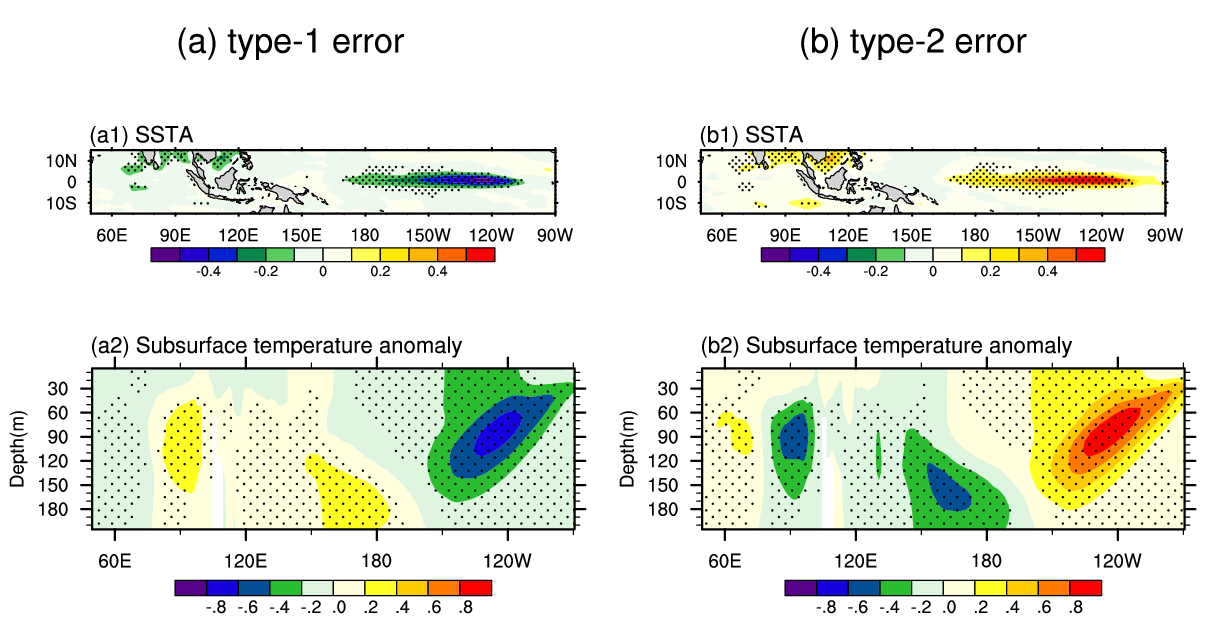State Key Laboratory of Numerical Modeling for Atmospheric Sciences and
Geophysical Fluid Dynamics (LASG)
Institute of Atmospheric Physics, Chinese Academy of Sciences

Vol. 6/No.6 July 2018
[Climate predictability] Summer Predictability Barrier of Indian Ocean Dipole Events and Corresponding Error Growth Dynamics
Indian Ocean Dipole (IOD) is one of the dominant modes in the tropical Indian Ocean (IO) at the inter-annual time scale, which has a significant influence on global weather and climate. It is therefore important to predict IOD events successfully. However, the prediction skill of IOD is very poor. So what is the reason? How can one improve greatly the prediction skill for IOD events?
Recently, Dr. Liu Da, Prof. Duan Wansuo, Dr. Feng Rong and Prof. Tang Youmin investigated the effects of sea temperature errors in both tropical Pacific and Indian oceans on the predictability of positive IOD events by using the GFDL CM2p1 coupled model. They found that the positive IOD events tend to occur with not only a “winter predictability barrier” (WPB) but also a “summer predictability barrier” (SPB). They argued that these predictability barriers bestriding the two seasons certainly limit the skill of IOD predictions and contributes to the low skill of IOD predictions.
More is known about the WPB, while less is known about the SPB. Liu et al. focused on the SPB and revealed two types of initial errors that are more likely to cause a significant SPB for IOD. One type is of large and negative sea surface temperature anomalies (SSTAs) in the central-eastern Pacific and a dipole mode-structured subsurface sea temperature that has negative anomalies in the upper layers of the eastern equatorial Pacific and positive anomalies in the lower layers of the western equatorial Pacific; the other type shows a pattern almost opposite of the former type. By tracking evolutions of both types of initial errors, they showed that their Pacific Ocean component-induced northwesterly wind in the east pole of IOD is significantly suppressed by the summer strongest climatological southeasterly and positive IOD-induced southeasterly wind there, finally causing the considerable suppression of the loss of latent heat flux in the east pole and then favors the fastest growth of a positive SST error in this region during summer. Therefore, the initial sea temperature errors occurring over the tropical Pacific are the main source of the prediction errors associated with the SPB. In addition, it is noticed that both types of initial errors present their large values in few regions. This indicates that the prediction errors are most sensitive to the initial errors in these regions. If one preferentially reduces the initial errors in these regions, the skill of IOD prediction will be greatly improved. The regions also shed light on the areas for targeting observations associated with IOD predictions.

Figure 1 Composites for (a) type-1 initial errors and (b) type-2 initial errors that cause a significant SPB for IOD predictions. The upper panel shows the SSTA component, and the lower panel shows the equatorial subsurface temperature anomaly (units: °C, averaged over the region 5°S–5°N). Dotted areas indicate that the composites for SSTA and subsurface temperature anomaly errors exceed the 99% significance level with a t-test.
Citation:
Liu, D., Duan, W., Feng, R., & Tang, Y. (2018). Summer predictability barrier of Indian Ocean dipole events and corresponding error growth dynamics. Journal of Geophysical Research: Oceans, 123. https://doi.org/10.1029/2017JC013739
Contact: DUAN Wansuo, duanws@lasg.iap.ac.cn
E-mail: lasg_newsletter@lasg.iap.ac.cn
Editors: Chuanyi Wang (wangcy@lasg.iap.ac.cn), Kangjun Chen(ckj@lasg.iap.ac.cn)